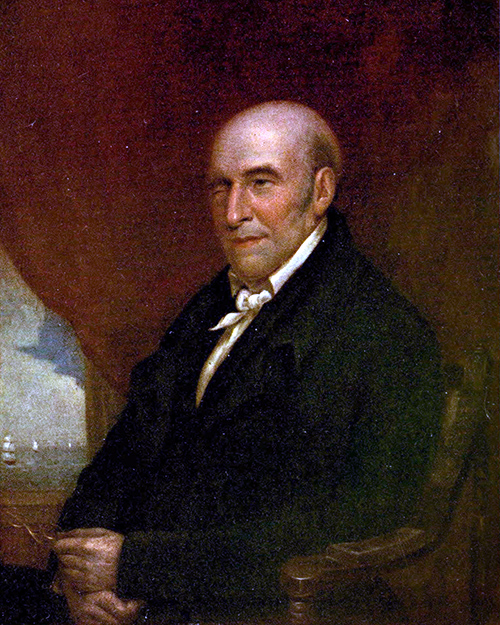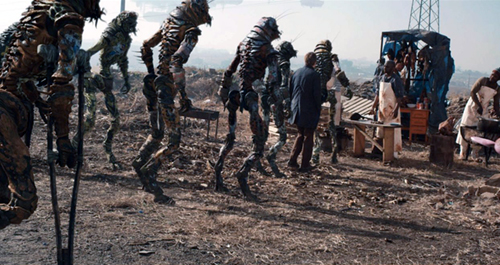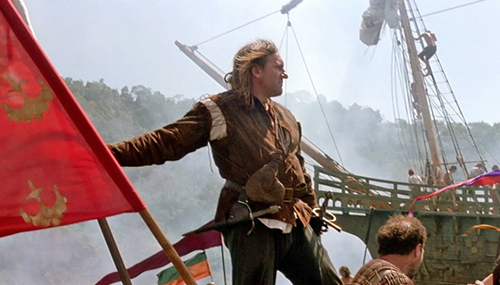In Chapter One of Al Capone’s Beer Wars: A Complete History of Organized Crime in Chicago During Prohibition, author John J. Binder, offers the opinion that some immigrants to Chicago:
Brought with them a belief . . . that the system was there to be exploited by individuals for their personal gain as opposed to the idea that individuals worked for the common good. [Italics mine.]
Binder was trying to put the Chicago “Beer Wars” into context.
He was explaining why immigrants from the semi-feudal worlds of Italy, Ireland, Germany, and Russia, worked to exploit American society: some by building legal businesses, and others by building illegal businesses.
(Based on my own family history, I’m quite sure that many Italian-Americans were a lot more idealistic citizens than Binder imagined.)
In the conclusion of his book, Binder gives Capone an A minus, for his work as a professional gangster.
These were his reasons for this “less than perfect” grade:
He had strong business sense and excellent martial skills . . . However, his public behavior . . .put him [too much] in the spotlight” and he should have filed his income tax returns.
Founding Father Thomas Jefferson (1743-1826), as a thinker, was more concerned about “the Common Good” than many of the other Founding Fathers.
Jefferson was the son of a landowner, and he owned slaves throughout his life.
However, he did believe in Universal Suffrage, and in the ideals of Democracy (at least in theory).
He certainly didn’t believe in a “divine right” for English men, then only one-third of the population!
Jefferson also didn’t believe that the American system of slavery would continue many generations after his death.
(He left that disquieting problem for future generations to contend with.)
In 1813, idealist Jefferson wrote to John Adams (1735-1826) that Europe’s class system of “rank, birth, and tinsel-aristocracy will finally shrink into insignificance.”*
A few days before he died (in 1826), Jefferson wrote:
The mass of mankind has not been born with saddles on their backs, nor a favored few booted and spurred, ready to ride them legitimately. . .*
Despite Jefferson’s materialism, he truly believed that only the American people could preserve our Democratic system.
He stipulated that our nation must become better educated, and more guided by the sciences.
(If this were not so, I think he feared that eventually we would lose our Democracy.)
I just finished the biography Dearest Friend A Life of Abigail Adams (published in 1981) by Lynne Withey.
It’s about the wife of the nation’s first Vice President and second President, John Adams.
In Dearest Friend, I learned that Mr. and Mrs. John Adams (a couple who disliked the whole idea of political parties) switched from being Federalists to being Republicans, during their lifetimes.
Here’s a section:
Behind her growing conservatism was a profound distrust of the ordinary man or woman. Such people, she believed, were incapable of thinking rationally about important issues but would follow a charismatic leader blindly and could easily be duped by propaganda.
A deep materialism, and the goal of the “Common Good,” have been at war in the U.S. since its’ inception.
After the Revolutionary War, many of the elite colonialists fled to Canada.
When framing the Federal Government, the Founding Fathers bowed to the financial interests of the big plantation owners, and counted blacks as 5/8ths of a human being (for mainly financial reasons).
After the Civil War, many plantation owners received $300 payments, but only a few blacks received forty acres and a mule.
Since the beginning of this country, some Americans have considered true Democracy to be just a pipe dream, not really worth working on.
When studying U.S. history, it’s evident that the English elite exploited both the non-English, and the English plebs, as North America was settled.
During the 1600s and 1700s, wild forests were farmed (and Native Americans murdered) through the use of slaves, English and Irish convicts, and the indentured servant system.
During the 1800s and 1900s, immigrants from Europe, and Asia, were used to build our cities and railroads, as well as staff our mines and factories.
A few immigrants (like Andrew Carnegie) became titans of industry, but most first-generation Americans worked long hours doing manual labor, in hopes that some of their children would eventually survive existence in the underclass.
The book Round Trip to American describes how many immigrants came to the U.S. for a while, found it not to their liking, and returned to their home countries (Europe or Asia).
Some migrants returned to Europe and Asia, and transformed their home countries into modern societies.
Trump talks about saving America by deporting immigrants, but his idea is not based on logic, or facts.
By deporting so many hard-working immigrants, he’s just disrupting profitable American companies.
Undocumented immigrants typically pay into the Social Security system, but then get nothing back, helping to keep the system solvent.
Throughout the history of this country, immigrants have always started more new businesses than the U.S. born.
Immigrants spend money on food and housing, increasing consumer spending.
Financially speaking, deporting immigrants by the thousands, is not a good move for the U.S. economy.
I guess that our relationship to the Constitution, and Democracy, is a bit like our relationship to marriage.
Some men (or women) vow never to commit the sin of adultery during the wedding ceremony.
A few years later, however, “the heart wants what it wants” and they are unfaithful to their wives (or husbands).
I know that the folks who back Trump are hypersensitive about this idea of the Common Good.
Kevin Roberts (President of the Heritage Foundation) mischaracterizes Lefties (in Project 2025), saying that “The Left does not believe that all men are created equal. They believe they are superior.”
He mistakes idealism for self-righteousness.
Trump, and his supporters, swear that they believe in the Democratic system of government, and that the Left must “hate America.”
That’s the pot calling the kettle black.
Without a concern for the Common Good, Democracy will fail.
*Both of the Jefferson quotes are taken from Thomas Jefferson on Democracy, selected and arranged by Saul K Padover, Penguin, 1939.





















